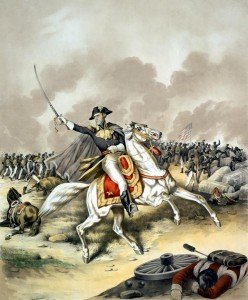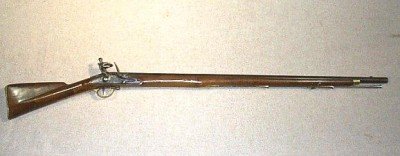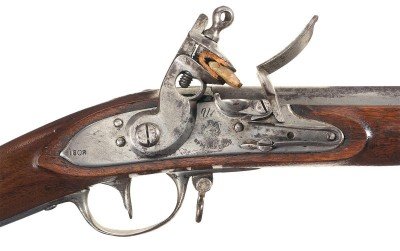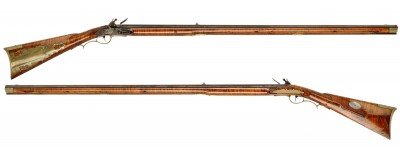The glorious 8th of January is upon us! Why is the 8th of January a glorious day you may ask? Why that is the day we fought the bloody British in the town of New Orleans 200 hundred years ago! And sent them running through the briars and brambles where a rabbit wouldn’t go! Ok, so there is a bit of embellishment in the classic Jimmy Driftwood song, but the sentiment is there.
The War of 1812 is really the war that solidified our independence from England. There isn’t room to go into a full history of the war, its causes, effects and whatnot here, but we need a basic understanding of why the Battle of New Orleans was so important.
Took a Little Bacon and Took a Little Beans
Long story short, we got our asses kicked in just about every military engagement during the War of 1812. We were fighting the best army in the world at the time and the only reason they didn’t completely wipe us out (although they did burn Washington D.C.) was because they were also busy fighting the French. They eventually kicked Napoleon’s ass, too, at the Battle of Waterloo.
Down The Mighty Mississip
In late 1814 the British were threatening New Orleans and the Gulf Coast. New Orleans was the most important trade center and port in the Untied States and it had to be protected. Enter Andrew Jackson. He assembled a rag tag Army to stop the British Invasion. This army he created is one of the most culturally diverse in all of American history. There were regular army units like the 7th US Infantry, volunteer companies form Kentucky and Tennessee, local Louisiana units with French and Spanish heritage, Native Americans and Free Men of Color. There were even pirates! This army held its ground and roundly beat one of the best veteran armies in the world, some of whom, less than 6 years later, would kick Napoleon’s ass at Waterloo. They didn’t really run through the briars and brambles when they retreated, either. Most of them retreated in formation, like the seasoned professional soldiers they were. But we still kicked their asses! This was very important to the moral of the American people at the time.
5 Guns from the Battle of New Orleans
So without further ado, here are 5 guns that played an important roll on the battlefield 200 years ago.
1. The Brown Bess
This is the primary musket of the British Army at the time. There were also a number of them in the hands of the Americans on the 8th of January. The Brown Bess was everywhere at the time, you can think of it as the AK of its day. Brown Bess is actually a nickname; they were officially called Land Pattern Muskets. These were 55 inches long and weighed about 10 pounds. They were flintlocks and slung a .75 caliber lead ball. Like all smooth-bore muskets, the Brown Bess was not the most accurate of firearms. But hundreds of them being fired in volley could, and did, cause a lot of damage, and in the hands of the well trained and disciplined British Army they were feared.
2. The 1795 Springfield
This is the official US musket of the War of 1812. It is really an updated version of the French Charleville Musket that was imported during the Revolutionary War. Heck, there were some Charlevilles at New Orleans as well. This is also a smoothbore flintlock musket. Its biggest difference from the Brown Bess was caliber. The 1795 was .69 caliber and had a slight range advantage over the Bess. The lighter, flatter trajectory bullet debate is nothing new! Speaking of flints, one of the biggest contributions the pirates made to the cause were hundreds of rifle flints which the American forces were in desperate need of.
3. Artillery

Reenactors loading a cannon on the actual site of the Battle of New Orleans. They are dressed in the uniform of the US Navy.
Lets talk American Artillery. The cannons and their crews are a great example of the Army that Jackson assembled for the defense of New Orleans. The guns themselves were diverse with some being regular army field pieces, Naval guns and even some odd ball ones left over from with the Spanish owned Louisiana Territory. Regular Army units, local units that used French commands, free blacks and pirates, manned these guns. The Bartitarians, those are the pirates, manned big 24 and 32 pound guns on the 8th. Oh, and there were sailors from the USS Carolina working some guns on land that day too. No alligators had their heads filled with cannon balls or behinds powdered.
4. The Baker Rifle
These rifles were in the hands of the British 95th Rifles on the 8 th of January 1815. The Baker was primarily a result from the experience the British had during the American Revolution. That experience of being on the receiving end of well-aimed rifle fire! The Baker was intended to be accurate to around 400 yards although there are some accounts of it being deadly all the way out to 800. That is some fine shooting with a flintlock and iron sights. The Baker had a .625 inch bore that fired a cloth or paper patched round ball. As with all rifles of the time, it loaded slower than the muskets. The Brown Bess could fire 3 rounds a minute where the Baker could possibly get off 2 in the hands of a well trained and drilled rifleman.
5. The Squirrel Rifle
The Americans had rifles too. Of all shapes, sizes and calibers! These were primarily in the hands of the “Dirty Shirt” volunteers from Tennessee and Kentucky. These rifles were not military issue like the Baker. The rifles in the hands of the Americans were made in countless blacksmith shops all over the country. Some of them were had fancy stocks with inlays and some were a lot more pedestrian. But the important part is that they worked and the men who carried them knew how to use them. They should have too, these are the guns they used to defend there home and put food on the table and when they were called upon they used them to defend their country from a foreign invader!
So there we go. These are but some guns that were used to defend the US 200 years ago. But the most important part is the men who made the 8 of January glorious. These are the people from a multitude of cultures who came together to defend their country.
Also, enjoy this video of Johnny Horton!
https://youtu.be/NFcLnD1HjFE




